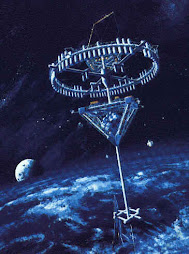Resurrecting the Dodo and Other Extinct Creatures
Though some experts contend that it will never be possible, a great debate is underway in science about whether it's ethical to bring an extinct species back to life. Some animals are driven to extinction by human action, but others simply can't survive in their natural habitat or because of a major change in climate. Earth has gone through several mass extinctions, and bringing back many of these creatures could throw the world's ecosystem into chaos.
There's the question of where these creatures would go, especially since many extinct creatures would have no natural predators, except for humans. Would putting a saber-tooth tiger in the Siberian tundra disrupt the local food chain (in addition to terrorizing locals)? The alternative is keeping recreated species in a "Jurassic Park"-like zoo or nature preserve, which is exactly what a group of Japanese scientists proposed in 2005.
Image courtesy Andreas Meyer DreamstimeScientists believe that up to 10 million mammoths may be buried under the permafrost of the vast Siberian tundra. Some scientists to advocate cloning the animals.
In July 2007, a very well preserved woolly mammoth carcass was discovered in Siberia, reinvigorating debate about trying to resurrect the species. Some scientists contend that resurrecting extinct species may be easier with frozen animals. Sperm from mice frozen for 15 years have been used to inseminate living mice. The contention is that a female elephant could be inseminated with recovered mammoth sperm to create an elephant-mammoth hybrid. But dodos only lived in the warm climate of Mauritius and the surrounding islands -- the likelihood of finding a frozen one is slim to say the least -- so scientists would have to turn to other means to bring them back to life.
Another possibility proposed for mammoths is to remove DNA from an elephant egg and fuse it with the cell of a mammoth. That would create a creature that's 100 percent mammoth. A similar technique could conceivably be tried with a dodo, perhaps using a Nicobar pigeon, the dodo's closest non-extinct relative. But the cloned embryo would still have to be implanted into a living creature that can carry it to term (or until the egg is laid, in the case of the pigeon).
And yet another proposed method would be to use DNA from an extinct animal, like a dodo or mammoth, as a model. A living relative would then be genetically engineered to give birth to offspring that are essentially the model animal.
Extracting and decoding the DNA is the fundamental challenge. Cells break down over time, even in well preserved or frozen specimens. Gaps in DNA mean that piecing together the full genetic map of a creature may be impossible. Gaps can lead to birth defects or unviable offspring. Some scientists also believe that sperm frozen for tens, or even hundreds, of thousands of years won't be usable. Yet things that seemed impossible a decade or two ago are now happening thanks to the rapid pace of genetics research. Scientists have produced full genetic maps of several living species, including humans and dogs, and have even recreated the 1918 influenza virus that killed millions.
Image used in Public DomainThe dodo is commonly found in popular culture, sometimes representing stupidity or something going extinct or out of fashion.However, it’s also used on the official coat of arms for Mauritius.
However, even if better DNA samples, improved genome-decoding techniques and more knowledge of cloning eventually make it possible, do we want revived dodos or woolly mammoths lumbering around? Proponents of the process contend that much could be learned from bringing back these animals, while critics say that the process could quickly get out of control. For example, researchers believe that it's possible to fully map the Neanderthal genome, which should teach us more about the relationship between modern humans and our ancient forebears. But is it ethical and wise to take the next great leap by cloning a Neanderthal? Perhaps they learned nothing from the movie "Encino Man."
Source:http://www.howstuffworks.com
Saturday, November 24, 2007
Subscribe to:
Posts (Atom)

